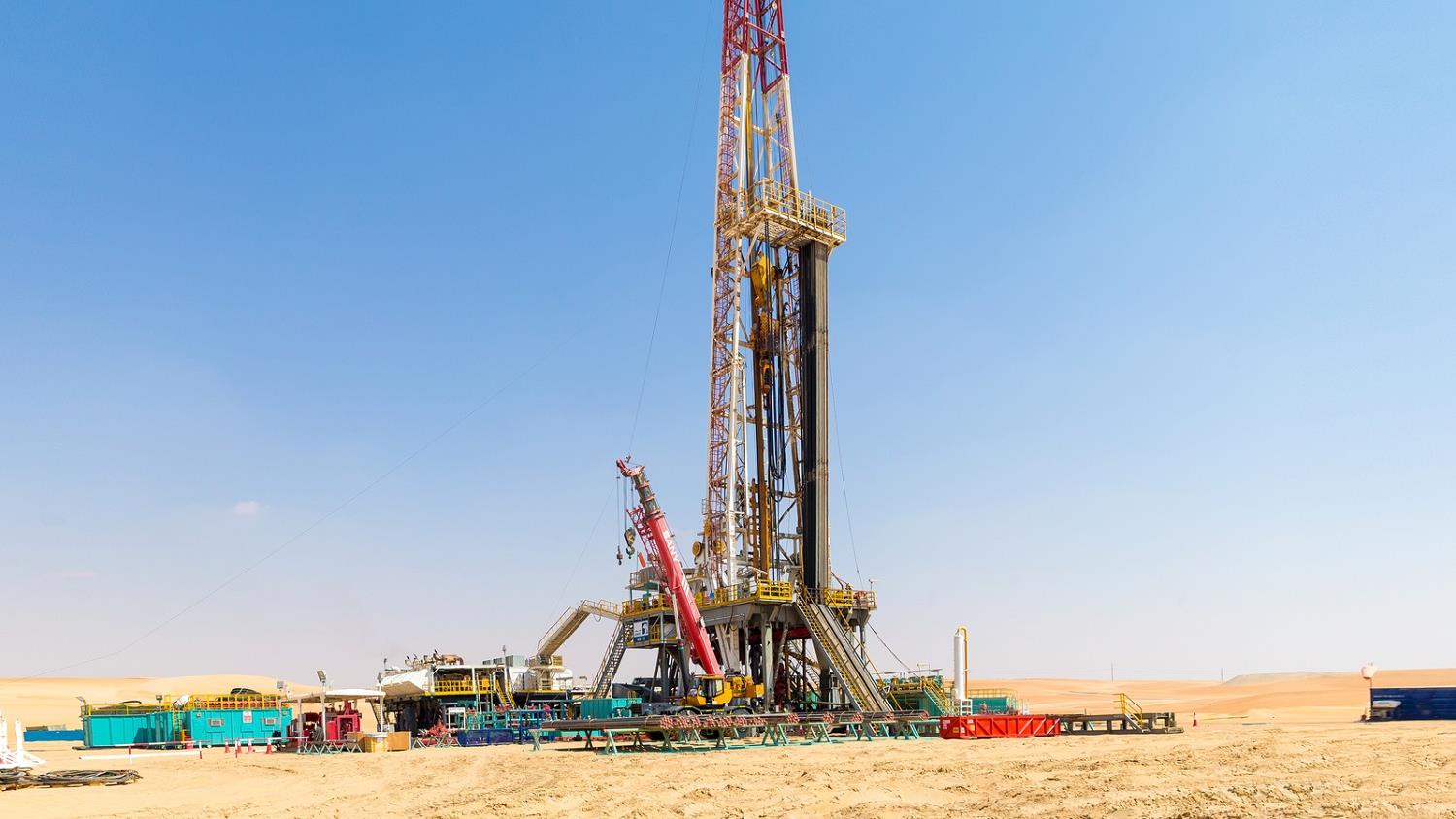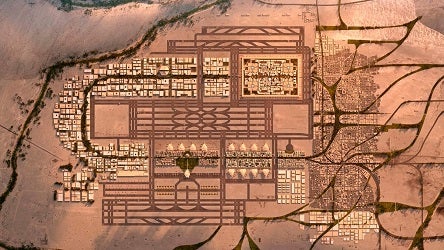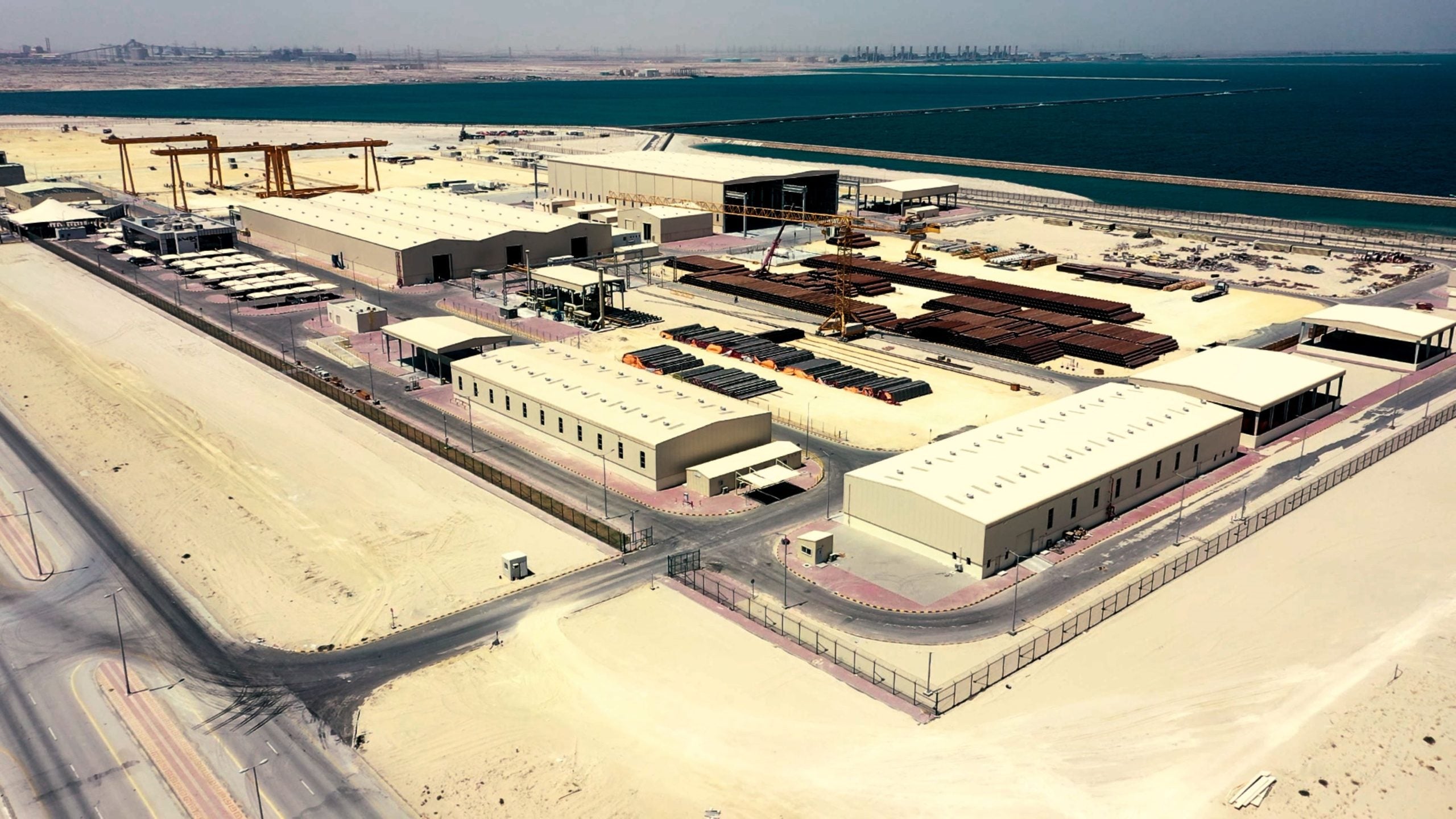Region’s $155bn hydrogen projects require focus
17 November 2022
 Commentary
Commentary
Jennifer Aguinaldo
Energy & technology editor
As of 16 November, close to 50 green hydrogen projects requiring an estimated investment of at least $155bn are being planned in the Middle East and North Africa (Mena) region.
Integrated green hydrogen-based ammonia production facilities comprise the majority of these projects, which means the total estimated investments may be broken down into renewable energy plants, $102bn; electrolyser plants, $23bn; air separation units, $14bn; and civil works, $16bn.
The estimated investment excludes the infrastructure required to store or transport the end products to their destination.
These projects offer major opportunities for the entire value chain, not least for solar and wind power plants, which could account for an average two-thirds of the total investment.
The ongoing Cop27 UN climate summit in Egypt is helping build the momentum. Preliminary agreements for over 23GW of wind projects and several green hydrogen deals in Egypt have been signed immediately before and during the conference.
The North African nation already accounts for about 42 per cent of the planned green hydrogen and ammonia projects in the Mena region.
While there is widespread pessimism about the feasibility of most of these projects – with only one project having secured financing so far – the gravity of the Paris Agreement commitments and the stature of companies involved in these so-called early-mover projects are hard to dismiss.
Potential investors range from the region’s sovereign wealth funds, which built their portfolio using oil and gas revenues, to energy trading companies and suppliers, equity investors, port operators and international and regional utility developers.
Export credit agencies, particularly from the net-zero economies in Asia and Europe, are expected to play a crucial role as they consider underwriting the substantial risks, and potential returns, that these projects carry at this early stage.
Scaling electrolyser capacity and production in time to meet the proposed projects’ timelines is a key question yet to be answered. Producing and consuming countries also need to set up mutually agreed standards and regulations on what constitutes clean and green hydrogen.
These and other issues will influence how these projects can reach a final investment decision (FID). Offtake and financing negotiations have been dragging on for nearly two years for some of the earliest schemes, which holds back the projects from reaching the construction phase.
The understanding is that potential stakeholders for most of the projects are nowhere near reaching FID and, except for a very small number of exceptions, may need a few more years to get there.
Similarly, the inertia to ramp up fossil fuel capacities in the wake of the energy crunch induced by the Russia-Ukraine war is not necessarily helping these projects get over the line sooner, or as expected.

Exclusive from Meed
-

-
 Arada awards $16m retail complex construction deal
Arada awards $16m retail complex construction deal30 July 2025
-
 Contract award nears for King Salman airport runway
Contract award nears for King Salman airport runway30 July 2025
-
 NMDC Energy begins fabrication at Saudi Arabia yard
NMDC Energy begins fabrication at Saudi Arabia yard29 July 2025
-
 Miral moves Harry Potter theme park bid deadline
Miral moves Harry Potter theme park bid deadline29 July 2025
All of this is only 1% of what MEED.com has to offer
Subscribe now and unlock all the 153,671 articles on MEED.com
- All the latest news, data, and market intelligence across MENA at your fingerprints
- First-hand updates and inside information on projects, clients and competitors that matter to you
- 20 years' archive of information, data, and news for you to access at your convenience
- Strategize to succeed and minimise risks with timely analysis of current and future market trends

Related Articles
-
 Deadlines extended for Kuwait oil projects worth $2.5bn
Deadlines extended for Kuwait oil projects worth $2.5bn30 July 2025

Register for MEED’s 14-day trial access
Kuwait’s state-owned upstream operator Kuwait Oil Company (KOC) has extended bid deadlines for six vital oil projects, which are estimated to be worth a total of $2.5bn.
The first contract, estimated to be worth KD292m ($951m), is focused on developing a separation facility in the NK SA/BA Area, close to Gathering Centre 23 (GC-23) and GC-24.
The scope of the contract also includes a new injection facility at GC-31 and effluent water injection networks in north Kuwait. The project’s latest bid deadline has been set for 5 August.
The second contract is to develop the planned Mutriba remote boosting facility in northwest Kuwait. It was originally tendered earlier this year with a bid submission deadline of 29 June. The deadline has now been extended to 17 August.
The project has an estimated budget of about KD130m ($420m) and its scope includes:
- Development of the Mutriba oil field
- Installation of the degassing station
- Installation of manifolds
- Installation of condensate facilities
- Installation of wellhead separation units
- Installation of the pumping system
- Installation of wellhead facilities
- Installation of oil and gas treatment plants
- Installation of a natural gas liquids plant
- Installation of a water and gas injection plant
- Construction of associated utilities and facilities
The onshore Mutriba oil field is located in northwest Kuwait.
In October 2024, KOC announced that it was preparing to tender a project management contract for a scheme to develop the field.
At the time, it said four international companies had been invited to participate in the tender process. These were:
- Schlumberger (US)
- Halliburton (US)
- Baker Hughes (US)
- Weatherford International (US)
KOC also said that the list of qualified companies could be extended before the invitation to bid was issued.
The third project, estimated to be worth $100m, is for an effluent water injection network in north Kuwait. The bid deadline has been extended to 5 August.
Effluent water injection or water flooding is a secondary hydrocarbons recovery technique where produced water is injected into a well’s formation under high pressure and temperature conditions to recover more of the oil initially in place.
The fourth project is estimated to be worth around $100m and is focused on the construction of a new injection network in north Kuwait that will service the Sabriyah/Bahra (SA/BA) area. Its bid deadline has also been extended to 5 August.
The fifth project that has had its deadline extended is focused on developing Jurassic Light Oil (JLO) export facilities and upgrading the existing export network.
The main contract bid submission date for the project, which is understood to have a budget of KD175m ($569m), has been changed to 3 August.
The project was originally tendered in November last year with a bid deadline of 1 December 2024. Other recent deadlines have included 15 July, 24 June, 27 May, 27 April and 6 April.
In an announcement in April last year, KOC prequalified up to 15 contractors to bid for these projects:
- CTCI (Taiwan)
- Daewoo Engineering & Construction (South Korea)
- Fluor (US)
- Hyundai Engineering & Construction (South Korea)
- Hyundai Engineering Company (South Korea)
- Hyundai Heavy Industries (South Korea)
- JGC Corporation (Japan)
- Larsen & Toubro Energy Hydrocarbon (India)
- NMDC Energy (UAE)
- Petrofac (UK)
- Saipem (Italy)
- Samsung E&A (South Korea)
- Sinopec Engineering Corporation (China)
- Sinopec Luoyang Engineering Company (China)
- Tecnicas Reunidas (Spain)
In September 2024, KOC announced a second list of 13 prequalified contractors, with Hyundai Heavy Industries and NMDC Energy removed from the list.
At the time, KOC said that companies not included on the list could file a complaint against their non-inclusion before the official invitation to bid on the project.
It is unclear whether more prequalified companies have been added or removed from the list since September.
The sixth project that has seen its bid deadline extended is focused on developing separation facilities at GC-25 and a water injection facility at GC-30.
The contract is estimated to be worth KD104m ($338m). In the latest extension, the bid deadline has been set for 10 August.
Kuwait is in the middle of an upstream projects push, in line with its goal of producing 4 million barrels a day of oil by 2035.
https://image.digitalinsightresearch.in/uploads/NewsArticle/14364081/main4907.jpg -
 Arada awards $16m retail complex construction deal
Arada awards $16m retail complex construction deal30 July 2025
Sharjah-based real estate developer Arada has awarded a AED60m ($16m) contract to build the Masaar Central project in the Suyouh district of Sharjah.
The contract was given to the local firm Intermass Engineering & Contracting.
Masaar Central will serve as the retail hub at the centre of the Masaar project.
Construction is expected to begin soon, with completion slated for 2026.
Masaar Central will offer retail, dining, wellness and education facilities over an area of 53,000 square feet.
In June last year, Arada awarded a AED830m ($226m) contract to Intermass Engineering & Contracting to build 597 units in the Saro cluster of the Masaar project.
Intermass has previously completed the Sendian cluster, the first residential phase of Masaar, and is currently working on Robinia, Masaar’s third phase.
Valued at AED8bn, the Masaar scheme includes 4,000 villas and townhouses across eight gated districts, featuring a nature-inspired masterplan with more than 50,000 trees.
Arada’s new project launches reflect increased activity in the UAE real estate market, where projects worth over $323bn are in execution or planning stages.
This aligns with a forecast from UK data analytics firm GlobalData, predicting that the UAE construction sector will grow by 4.2% in real terms in 2025, driven by infrastructure, energy, utilities and residential construction projects.
 READ THE AUGUST 2025 MEED BUSINESS REVIEW – click here to view PDF
READ THE AUGUST 2025 MEED BUSINESS REVIEW – click here to view PDFGulf heads into a new era of aviation; Maghreb’s resilience rises despite global pressures; GCC banks expand issuance amid demand
Distributed to senior decision-makers in the region and around the world, the August 2025 edition of MEED Business Review includes:
> AGENDA 1: Middle East invests in giant airports> AGENDA 2: Broader region upgrades its airports> AGENDA 3: Global air travel shifts east> CURRENT AFFAIRS: Syria wrestles fragile security situation> GCC BANKS: Gulf banks navigate turbulent times> CONSTRUCTION: Soudah Peaks outlines project construction plans> INTERVIEW: SETS leads Saudi heritage preservation charge> LEADERSHIP: From plastic leakage to leadership in the Gulf> MAGHREB MARKET FOCUS: Maghreb pushes for stabilityTo see previous issues of MEED Business Review, please click herehttps://image.digitalinsightresearch.in/uploads/NewsArticle/14364351/main.jpg -
 Contract award nears for King Salman airport runway
Contract award nears for King Salman airport runway30 July 2025
 Related stories:
Related stories:> Middle East invests in giant airports
> Broader region upgrades its airports
> Global air travel shifts east

Register for MEED’s 14-day trial access
King Salman International Airport Development Company (KSIADC) has received best and final offers (bafos) for a design-and-build contract to develop the third runway at King Salman International airport (KSIA) in Riyadh.
"Bafos were submitted earlier this month [in July] and the contract is expected to be finalised soon," a source close to the project told MEED.
It is understood that the third and fourth runways will add to the two existing runways at Riyadh’s King Khalid International airport, which will eventually become part of KSIA.
In February, MEED exclusively reported that firms had submitted prequalification documents on 18 January for a contract to develop the third runway and taxiways at KSIA.
KSIADC, which is backed by Saudi sovereign wealth vehicle the Public Investment Fund, received interest from firms in December last year for the package.
KSIADC previously prequalified firms for the main engineering, procurement and construction packages and early and enabling works, as well as other elements of the construction work. These included specialist systems and integration; materials and equipment; engineering and design; professional services; health, safety, security, environment and wellbeing services; modular installation and prefabrication; local content; and environmental, social and governance (ESG) and other services.
The entire scheme is divided into eight assets:
- Iconic Terminal
- Terminal 6
- Private aviation terminal
- Central runway and temporary apron
- Hangars
- Landside transport
- Cargo buildings
- Real estate
In August last year, KSIADC appointed several architectural and design firms for the various elements of the project.
KSIADC confirmed that it had signed up UK-based Foster + Partners to design the airport’s masterplan, including the terminals, six runways and a multi-asset real estate area.
US-based engineering firm Jacobs will provide specialist consultancy services for the masterplan and the design of the new runways.
The client also confirmed the appointment of UK-based engineering firm Mace for the delivery partner role on the project.
The airspace design consultancy contract was awarded to local firm Nera.
 Mega airport project
Mega airport projectThe project covers an area of about 57 square kilometres (sq km), allowing for six parallel runways. It will include the existing terminals at King Khalid International airport, as well as 12 sq km of airport support facilities, residential and recreational facilities, retail outlets and other logistics real estate.
If the project is completed on time in 2030, it will become the world’s largest operating airport in terms of passenger capacity, according to UK analytics firm GlobalData.
The airport aims to accommodate up to 120 million passengers by 2030 and 185 million by 2050. The goal for cargo is to process 3.5 million tonnes a year by 2050.
Saudi Arabia plans to invest $100bn in its aviation sector. Riyadh’s Saudi Aviation Strategy, announced by the General Authority of Civil Aviation, aims to triple Saudi Arabia’s annual passenger traffic to 330 million travellers by 2030.
It also aims to increase air cargo traffic to 4.5 million tonnes and raise the country’s total air connections to more than 250 destinations.
 READ THE AUGUST 2025 MEED BUSINESS REVIEW – click here to view PDF
READ THE AUGUST 2025 MEED BUSINESS REVIEW – click here to view PDFGulf heads into a new era of aviation; Maghreb’s resilience rises despite global pressures; GCC banks expand issuance amid demand
Distributed to senior decision-makers in the region and around the world, the August 2025 edition of MEED Business Review includes:
> AGENDA 1: Middle East invests in giant airports> AGENDA 2: Broader region upgrades its airports> AGENDA 3: Global air travel shifts east> CURRENT AFFAIRS: Syria wrestles fragile security situation> GCC BANKS: Gulf banks navigate turbulent times> CONSTRUCTION: Soudah Peaks outlines project construction plans> INTERVIEW: SETS leads Saudi heritage preservation charge> LEADERSHIP: From plastic leakage to leadership in the Gulf> MAGHREB MARKET FOCUS: Maghreb pushes for stabilityTo see previous issues of MEED Business Review, please click herehttps://image.digitalinsightresearch.in/uploads/NewsArticle/14363916/main.jpg -
 NMDC Energy begins fabrication at Saudi Arabia yard
NMDC Energy begins fabrication at Saudi Arabia yard29 July 2025
Register for MEED’s 14-day trial access
Abu Dhabi-owned contractor NMDC Energy has started fabrication activities at its new yard in Ras Al-Khair, Saudi Arabia.
Built at a cost of AED200m ($54.5m), the yard covers 400,000 square metres within the Ras Al-Khair Special Economic Zone in the kingdom’s Eastern Province. It has a production capacity of 40,000 tonnes a year.
NMDC Energy held a steel-cutting ceremony on 28 July to mark the start of operations at the Ras Al-Khair yard.
The Abu Dhabi Securities Exchange-listed company inaugurated the facility in mid-January.
NMDC Energy signed a memorandum of understanding with Aramco to build the facility in 2018, when it was known as National Petroleum Construction Company (NPCC).
Nine offshore jackets are currently in production for NMDC Energy’s client, Saudi Aramco.
More than 1,800 employees will be mobilised from Abu Dhabi to the Saudi Arabia yard, NMDC Energy said.
“The Ras Al-Khair yard is central to NMDC Energy’s Saudi strategy and localisation roadmap. Over the past five years, the company has reinvested billions of riyals into the Saudi economy and is on track to increase its In-Kingdom Total Value Add score to 39% by 2025 and 51% by 2028,” NMDC Energy added.
ALSO READ: Aramco offshore contract awards set to rebound
 READ THE AUGUST 2025 MEED BUSINESS REVIEW – click here to view PDF
READ THE AUGUST 2025 MEED BUSINESS REVIEW – click here to view PDFGulf heads into a new era of aviation; Maghreb’s resilience rises despite global pressures; GCC banks expand issuance amid demand
Distributed to senior decision-makers in the region and around the world, the August 2025 edition of MEED Business Review includes:
> AGENDA 1: Middle East invests in giant airports> AGENDA 2: Broader region upgrades its airports> AGENDA 3: Global air travel shifts east> CURRENT AFFAIRS: Syria wrestles fragile security situation> GCC BANKS: Gulf banks navigate turbulent times> CONSTRUCTION: Soudah Peaks outlines project construction plans> INTERVIEW: SETS leads Saudi heritage preservation charge> LEADERSHIP: From plastic leakage to leadership in the Gulf> MAGHREB MARKET FOCUS: Maghreb pushes for stabilityTo see previous issues of MEED Business Review, please click herehttps://image.digitalinsightresearch.in/uploads/NewsArticle/14359665/main.jpg -
 Miral moves Harry Potter theme park bid deadline
Miral moves Harry Potter theme park bid deadline29 July 2025

Register for MEED’s 14-day trial access
Abu Dhabi’s Miral has extended the bid submission deadline for a tender to build a Harry Potter-themed expansion at the Warner Bros World Yas Island entertainment destination in Abu Dhabi.
Earlier this month, MEED exclusively reported that the tender for the estimated AED2bn-AED3bn ($545m-$816m) main construction works had been issued to contractors, with bids initially due on 28 July.
Miral has extended the bid submission deadline until 4 August, according to sources.
The scope of the Warner Bros World phase two expansion includes adding 40,000 square metres (sq m) to the existing theme park. This will include a Harry Potter-themed zone with three new rides, retail outlets, and food and beverage facilities.
Enabling works for the project have begun and are being undertaken by local firm NSCC International. Another local firm, Emirates Electrical & Instrumentation Company, is carrying out the early works.
Canadian engineering firm EllisDon is the project consultant, and French firm Egis is the lead designer.
According to media reports, the Abu Dhabi project will be the world’s sixth Harry Potter-themed park. The others are in Florida and California in the US, Beijing in China, Osaka in Japan and Leavesden in the UK.
The Abu Dhabi project was first announced in November 2022.
Yas Waterworld
Miral has developed a series of theme parks and other entertainment-related attractions on Yas Island, working with several local and international contractors.
On 1 July, Miral opened a new 16,900 sq m expansion of its Yas Waterworld park to the public.
The expansion added 3.3 kilometres of slide sections to the park. The addition of 18 new rides and attractions, bringing the total number of rides to more than 60, is expected to increase visitor capacity by 20%.
Construction was carried out by local contractor Alec.
Disney park
In May, The Walt Disney Company and Miral signed an agreement to build a Disney theme park resort on Yas Island.
Disney, which is based in the US, said the Abu Dhabi site will be its seventh theme park resort. The others are in California and Florida in the US, Paris in France, Hong Kong and Shanghai in China, and Tokyo in Japan.
In a statement, Disney noted that the UAE is located within a four-hour flight of one-third of the world’s population, making it a significant gateway for tourism. It is also home to one of the world's busiest airline hubs, with 120 million passengers travelling through Abu Dhabi and Dubai each year.
The Disney theme park resort in Abu Dhabi will include entertainment areas, themed accommodations, dining venues and retail experiences.
In 2023, Miral opened SeaWorld Abu Dhabi, also on Yas Island. Alec was the contractor for the estimated $565m project.
In 2018, Miral opened the Warner Bros theme park on Yas Island. Belgium’s Besix was the contractor for the estimated $531m project.
Other Miral projects have included the Etihad Arena and the indoor climbing and skydive centre Clymb. Bam International of the Netherlands was the contractor for the arena and Germany’s Zublin was the contractor for Clymb.
Yas Island was launched as a project in 2006 by local developer Aldar Properties. The original centrepiece attractions were the Yas Marina Circuit, which hosts Formula 1 motor racing’s annual Abu Dhabi Grand Prix, and the Ferrari World theme park.
 READ THE AUGUST 2025 MEED BUSINESS REVIEW – click here to view PDF
READ THE AUGUST 2025 MEED BUSINESS REVIEW – click here to view PDFGulf heads into a new era of aviation; Maghreb’s resilience rises despite global pressures; GCC banks expand issuance amid demand
Distributed to senior decision-makers in the region and around the world, the August 2025 edition of MEED Business Review includes:
> AGENDA 1: Middle East invests in giant airports> AGENDA 2: Broader region upgrades its airports> AGENDA 3: Global air travel shifts east> CURRENT AFFAIRS: Syria wrestles fragile security situation> GCC BANKS: Gulf banks navigate turbulent times> CONSTRUCTION: Soudah Peaks outlines project construction plans> INTERVIEW: SETS leads Saudi heritage preservation charge> LEADERSHIP: From plastic leakage to leadership in the Gulf> MAGHREB MARKET FOCUS: Maghreb pushes for stabilityTo see previous issues of MEED Business Review, please click herehttps://image.digitalinsightresearch.in/uploads/NewsArticle/14358463/main.jpg


